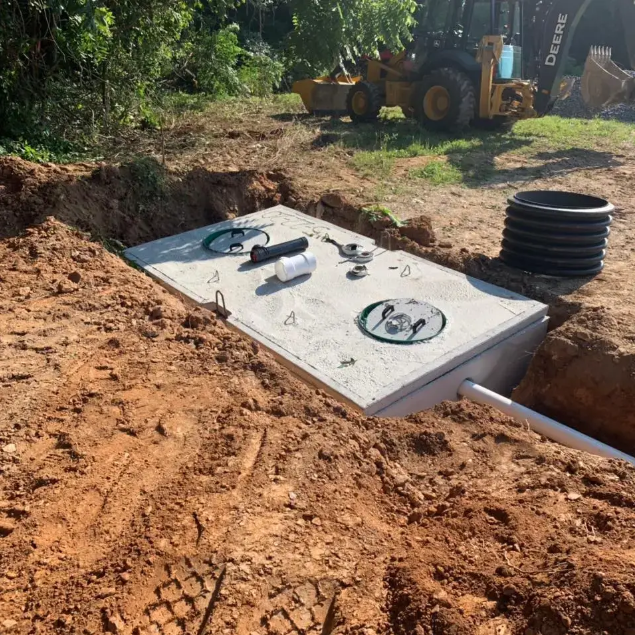Understanding the Differences Between Commercial and Residential Septic Systems
When it comes to wastewater management, septic systems play a crucial role in keeping our homes, businesses, and communities safe and sanitary. But not all septic systems are created equal. Commercial and residential septic systems serve the same basic function—treating and disposing of wastewater—but they differ significantly in design, capacity, maintenance, and usage demands.
Whether you’re a homeowner or a business owner, understanding the differences between commercial and residential septic systems can help you make better decisions when it comes to installation, maintenance, and repairs. At Colson’s Septic Services, we specialize in both types and are here to break down the key distinctions.
System Size and Capacity
One of the most obvious differences between commercial and residential septic systems is their size and capacity.
- Residential septic systems are typically designed to accommodate the needs of a single-family home. The size of the tank and the drain field is usually based on the number of bedrooms in the home, which correlates to the number of people who might live there.
- Commercial septic systems, on the other hand, are built to handle a much higher volume of wastewater. Businesses such as restaurants, hotels, office buildings, and schools often have hundreds of people using the facilities daily. These systems require larger tanks and more complex drain fields to accommodate continuous, heavy usage.
System Design and Complexity
Because of the higher demand, commercial septic systems are generally more complex in design.
- A residential system may consist of a single septic tank and a basic leach field. It relies primarily on gravity to move wastewater through the system.
- In contrast, a commercial system often includes multiple tanks, advanced pumping mechanisms, grease traps (especially in restaurants), pre-treatment units, and alarms to monitor the system’s performance. Some commercial systems also include aerobic treatment units (ATUs), which use oxygen to break down waste more efficiently than traditional anaerobic systems.
Usage Patterns
How a septic system is used greatly impacts its performance and longevity.
- Residential systems usually experience consistent, predictable usage. The flow of wastewater from a home follows a daily rhythm—more usage in the mornings and evenings, and lighter flow during the day.
- Commercial systems, however, are subject to irregular and often intense usage. For example, a restaurant’s kitchen may discharge large volumes of wastewater during peak hours. This variable usage requires commercial systems to be built with more durable components and often with backup systems in place to prevent overflow or failure.
Maintenance and Inspection Needs
Maintenance is essential for both types of systems, but the requirements differ significantly.
- Residential systems typically need to be pumped every 3 to 5 years, depending on household size and water usage. Inspections are recommended every 1 to 3 years.
- Commercial systems require much more frequent maintenance. Some businesses may need monthly or quarterly inspections, especially those that produce high volumes of grease, chemicals, or other potentially harmful waste. Failing to maintain a commercial system properly can lead to expensive repairs, system failures, and even health violations.
At Colson’s Septic Services, we work with commercial clients to create custom maintenance schedules that align with their business needs and meet local regulations.
Regulatory Compliance
Commercial septic systems are subject to stricter regulations and oversight than residential systems.
- Homeowners generally only need to comply with local health department guidelines.
- Commercial property owners must adhere to a broader range of local, state, and sometimes federal regulations, including environmental impact assessments, discharge permits, and frequent reporting. Non-compliance can result in hefty fines or business closures.
Colson’s Septic Services stays up-to-date with all relevant codes and compliance standards, helping businesses avoid costly legal issues and maintain smooth operations.
| Feature | Residential | Commercial |
|---|---|---|
| Daily Use | Light/Moderate | Heavy/Variable |
| Tank Size | 1,000–1,500 gallons | 2,000–5,000+ gallons |
| Maintenance | Every 3–5 years | Monthly–Quarterly |
| Regulations | Basic local requirements | Stricter, ongoing review |
| Installation Cost | $4k–$8k | $15k–$50k+ |
Final Thoughts
While residential and commercial septic systems serve the same purpose, their differences are substantial. From system size and complexity to maintenance requirements and regulatory obligations, understanding these distinctions can save you time, money, and potential headaches down the road.
Whether you need a system designed for your new home or a comprehensive service plan for your business, Colson’s Septic Services has the experience and expertise to get the job done right. Contact us today to schedule your next inspection or service appointment.
Colson’s Septic Services—Your Trusted Partner in Septic Solutions.


